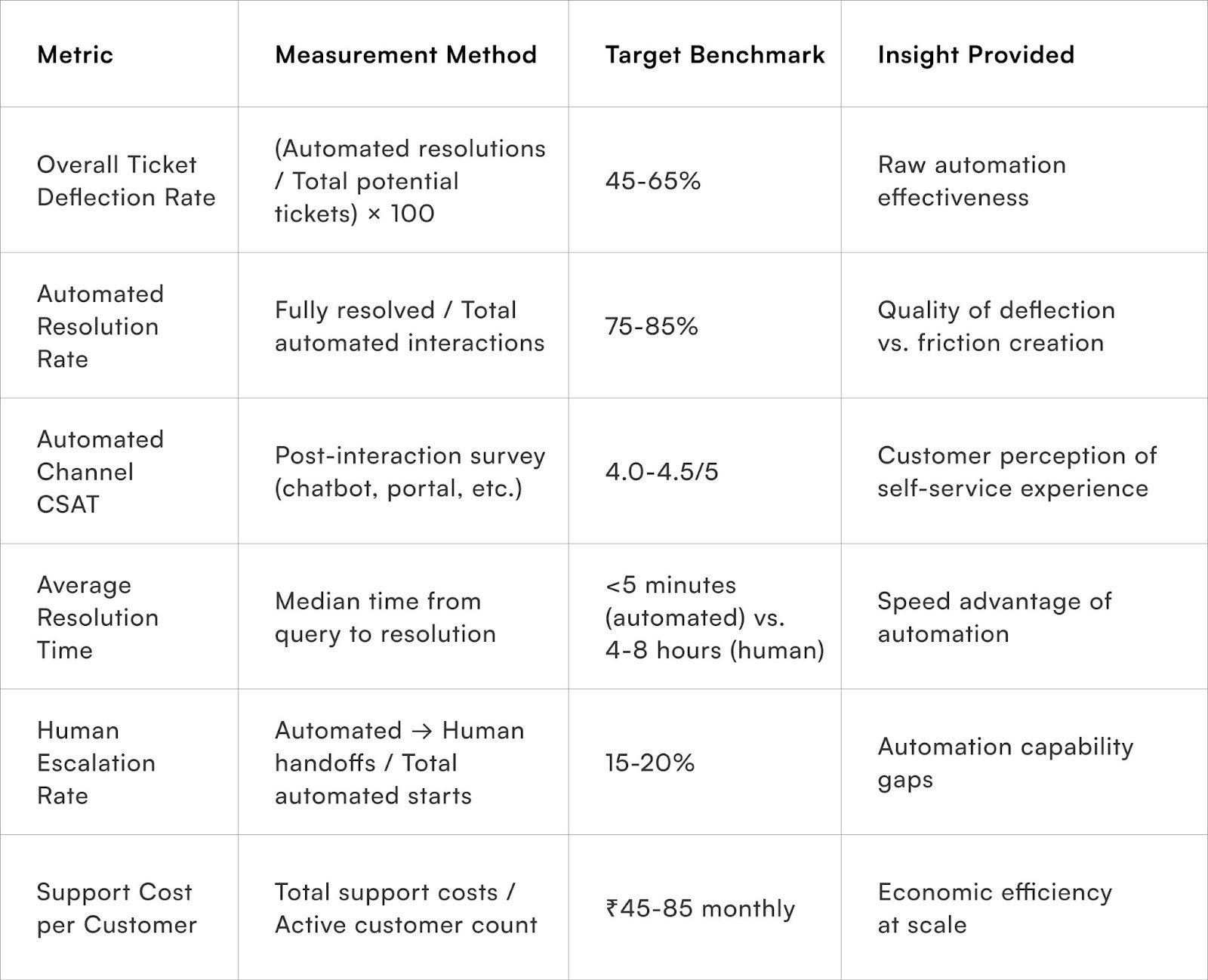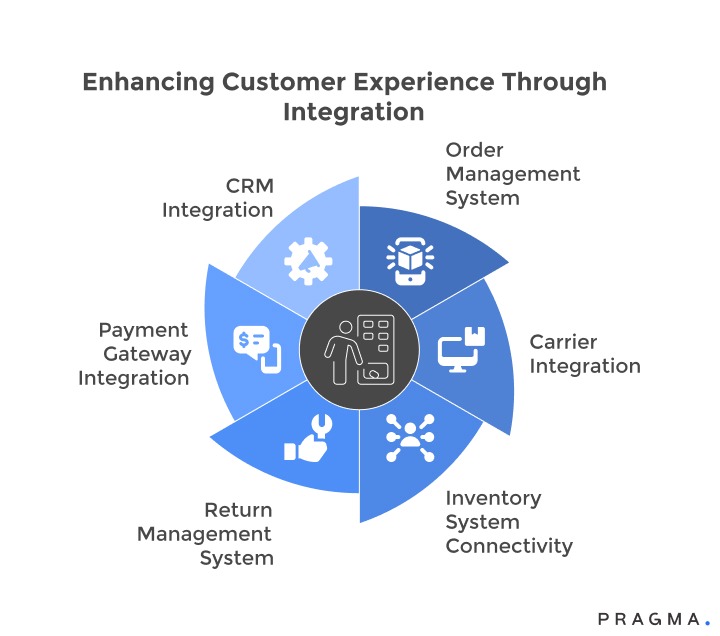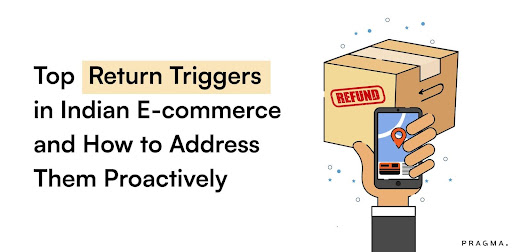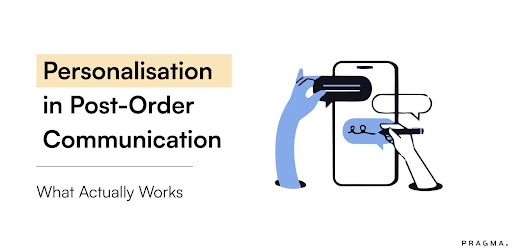In India’s fast-paced e-commerce landscape, customer support teams face an ever-mounting challenge: the post-order avalanche of
- “Where is my order?”
- “How do I return this?”
- and “When will I get my refund?” queries.
These repetitive questions not only swamp support agents, delaying resolution for more complex issues, but also drive up operational costs, erode margins, and risk customer dissatisfaction if not handled promptly. For D2C brands and online marketplaces aiming to scale, the old approach of staffing bigger support teams simply isn’t sustainable.
With buyers now expecting instant answers and frictionless experiences, automation emerges as a game-changer for post-order care. Today’s e-commerce leaders use smart tools and integrated platforms to auto-answer routine FAQs, update order statuses in real time, launch self-serve tracking portals, and trigger proactive notifications across email, WhatsApp, and SMS. The result: fewer tickets, faster resolutions, and agents freed up to deliver more personalised support where it actually adds value.
This blog explores proven strategies and technologies for Reducing Customer Support Load by Automating Post-Order Queries automating post-order queries. You’ll learn how to set up rule-based bots, connect tracking data to customer messaging, and use AI-assistants to reduce ticket volumes while improving satisfaction scores. In a space where responsiveness means everything, reducing manual workload doesn’t just save money—it builds trust and loyalty, giving brands the bandwidth to grow and thrive.
Empower Customers, Reduce Support Load
Put Self-Service First. Streamline Returns, Delight Customers.
Transform your returns experience with Pragma RMS chatbots and automation, enabling shoppers to initiate returns and exchanges instantly, 24/7, across WhatsApp, SMS, and web portals. Cut support tickets by upto 40%, minimize errors, and deliver flawless post-purchase support that scales automatically.
Why do post-order queries consume disproportionate support resources?
Volume concentration in predictable categories creates automation opportunities brands systematically miss

Customer support requests follow power law distributions where small numbers of query types generate majority of volume. Analysis across Indian D2C brands reveals that six query categories account for 72-83% of all post-order tickets despite infinite potential question variations.
Order tracking inquiries alone represent 28-38% of support volume as customers seek delivery status updates they could access independently with proper tooling. These requests require zero judgement—agents simply relay information from carrier systems—yet consume thousands of hours monthly through manual lookup and response processes.
Delivery timeline questions constitute another 15-22% of volume as customers want specific arrival dates rather than vague shipping confirmations. Return and exchange process inquiries add 12-18% as customers seek policy information readily available but buried in website footers. Invoice and order modification requests contribute 8-14%, whilst product availability questions for reorders represent 6-11%.
The aggregated effect means 79-103% of support capacity addresses queries with deterministic answers requiring no human intelligence, freeing just 20-30% of resources for complex problems like damaged shipments, quality complaints, or account issues where agent expertise actually matters.
Hyderabad electronics brands demonstrate this pattern clearly. Before automation, their 8-person team handled 6,400 monthly tickets, with agents averaging 26 tickets daily. Detailed categorisation revealed 67% involved order status, delivery dates, return processes, or invoice requests—all answerable through data retrieval without analysis. Their support costs reached ₹11.2 lakhs monthly whilst resolution times averaged 6.4 hours, creating customer frustration despite adequate staffing levels.
Why do some automation implementations increase customer frustration?
Poor execution creates obstacles rather than solutions when design ignores user needs
Avoiding Common Pitfalls in Support Automation
Key Issues to Address:

Rigid Chatbots and Keyword Matching:
Chatbots that rely solely on keyword matching often create dead-end conversations. If customers phrase questions differently than programmed, they receive irrelevant responses, leading to frustrating retries and ultimately, a shift to human support. This friction actively increases ticket volume.
Overly Complex Self-Service Workflows:
Even with useful functionality, complex self-service processes deter usage. For example, return portals requiring eight steps and multiple page loads can see abandonment rates as high as 68%. When automation demands more effort than direct human contact, it paradoxically increases agent workload.
Lack of Human Escape Hatches: Systems that trap customers in automated loops without a clear option to speak to a human generate extreme frustration. Repeated failed self-service attempts lead to urgent requests and negative sentiment flooding support channels, complicating resolution.
Delayed Chatbot Responses:
Customers expect instant replies from automated systems. Delays exceeding 3-5 seconds erode trust and make the system feel broken, prompting support escalations. Slow integrations with backend systems undermine the core value of automation—speed.
Generic Responses Lacking Context:
Chatbots providing vague answers like "Your order is being processed" without specific details (status, timeline, next steps) offer no real value. This frustrates customers who then contact human agents for the actual information they need.
Poor Mobile Experiences:
Given that 72-84% of D2C customers primarily use mobile devices, automation designed for desktop that performs poorly on mobile screens severely cripples its effectiveness. This forces customers back to simpler, phone-based support channels.
Lessons from Pune Jewellery Brands:
Initial chatbot implementations by Pune jewellery brands suffered from basic keyword matching, slow API calls (8-12 second response times), and no clear human handover. This resulted in a significant drop in customer satisfaction (from 3.8 to 2.9/5) within two weeks, with customers complaining about "useless robots" and overwhelming support lines.
After a redesign incorporating natural language processing, sub-2-second responses, and prominent "Talk to Human" buttons, customer satisfaction recovered to 4.1/5. Furthermore, the updated system achieved a 54% deflection rate, demonstrating the positive impact of addressing these common automation pitfalls.
How should brands measure automation success beyond ticket volume?
Reduction metrics alone miss customer satisfaction and resolution quality impacts
Ticket volume reduction represents obvious automation success indicator yet incomplete measurement frameworks miss critical quality dimensions that determine whether deflection improves or damages customer relationships.
Resolution rate measures what percentage of automated interactions fully address customer needs without escalation. High deflection rates prove worthless if customers still contact humans after attempting self-service, indicating automation creates obstacles rather than solutions. Target benchmarks suggest 75-85% of deflected queries should reach complete resolution without human involvement.
Customer satisfaction scores specific to automated channels reveal whether self-service feels helpful or frustrating. Separate CSAT tracking for chatbot interactions, tracking portal usage, and return portal experiences identifies which automation investments succeed versus which need improvement. Automated channel CSAT should reach 4.0-4.5/5 to justify deflection focus.
Time to resolution for successfully automated queries should dramatically improve over human-handled equivalents. Customers accessing order status through tracking pages should get instant information versus 4-8 hour email response waits. Automation creating slower experiences than human alternatives fails despite potentially reducing ticket counts through frustrated customer abandonment.
Human agent satisfaction improves when automation eliminates repetitive queries enabling focus on interesting problems. Surveying support teams about work quality and job satisfaction reveals whether automation benefits create genuine improvement or simply redistributes frustration. Target improvements include reduced burnout, higher engagement, and better retention.
Support cost per customer provides economic perspective beyond absolute ticket counts. Automation enabling 15% customer base growth without proportional support team expansion demonstrates scalable efficiency even if absolute ticket volumes don't decline dramatically.
Escalation rate from automated to human channels indicates automation quality. Well-designed systems should escalate under 15-20% of automated interactions, whilst poorly designed implementations push 40-60% of customers back to human support after failed self-service attempts.

What integration requirements enable effective query automation?
Backend system connectivity determines whether automation provides value or vague placeholders
Key Integrations for Effective Automation:

Order Management System (OMS) Integration:
Provides real-time access to customer purchase history, order status, and transaction details. Chatbots and tracking portals require direct database or API connectivity to instantly retrieve customer-specific information using identifiers like phone numbers, email addresses, or order numbers.
Carrier Integration:
Delivers live tracking updates directly from logistics partners via API connections. This offers second-by-second visibility of package location and movement, replacing generic and unhelpful "in transit" statuses.
Inventory System Connectivity:
Enables accurate stock availability responses for reorder inquiries. Intelligent systems can confirm "Yes, [Product Name] is currently in stock with 2-3 day delivery" or provide specific restock dates, instead of directing customers to browse websites.
Return Management System (RMS) Integration:
Facilitates self-service return tracking, covering pickup status, warehouse receipt, quality inspection results, and refund timelines. Customers should not need to contact support to understand their return's progress.
Payment Gateway Integration:
Allows chatbots to verify payment receipt, identify failed transactions, and explain specific payment issues without requiring human access to financial systems.
CRM Integration:
Personalises automated interactions based on customer value, purchase patterns, and support history. This can include priority routing for high-value customers or extra guidance for first-time customers during return processes.
Case Study: Surat Textile Brands
Surat textile brands demonstrate exemplary integration, connecting their order management, three carrier systems, inventory database, return workflow platform, payment gateway, and CRM into a unified data layer.
This comprehensive integration, accessible to their chatbot and self-service portals, enables their chatbot to address 74% of queries with specific, actionable information, significantly reducing the need for human contact.
The implementation cost ₹8.4 lakhs over 4 months but resulted in a substantial reduction in monthly support costs, from ₹13.6 lakhs to ₹5.1 lakhs, within six months.
How should human agents handle queries escalated from automation?
Handoff quality determines whether automation creates efficiency or compounds customer frustration
Customers escalating from automated channels to human support arrive with elevated expectations and often mounting frustration from failed self-service attempts. Agent handling of these escalations critically impacts overall satisfaction and determines whether automation improves or damages customer relationships.
Context preservation prevents repetitive information requests that exponentially frustrate customers. When chatbots hand off to humans, complete conversation history should transfer automatically so agents see everything customers already provided. Forcing customers to re-explain situations after lengthy chatbot interactions creates terrible experiences.
Priority routing acknowledges customer effort attempting self-service. Customers who tried automation before escalating demonstrate patience and preference for efficiency, warranting faster human response than customers who immediately demanded agent attention. Queue positioning should reflect self-service attempts.
Empowered resolution capability addresses problems immediately rather than creating additional escalation layers. Agents receiving automated escalations should possess authority to issue refunds, arrange replacements, or provide compensation without supervisor approvals that extend resolution timelines.
Feedback loops from agents to automation teams identify capability gaps requiring system improvement. When multiple customers escalate with same query type, automation clearly fails to address that pattern adequately. Systematic feedback capture enables continuous automation enhancement.
Specialised training prepares agents for automation-era support where every interaction involves complexity since simple queries get deflected. Agents need problem-solving skills, empathy, and product expertise rather than rote information delivery abilities sufficient for pre-automation support.
To Wrap It Up
Support automation transforms customer service from linear cost scaling that grows proportionally with customer acquisition into efficient operations that handle increasing volumes without proportional expense growth.
The strategic impact extends beyond cost reduction into faster resolution, improved satisfaction through instant information access, and freed human capacity for complex situations where empathy and expertise create genuine value.
Brands achieving 50-70% deflection through thoughtful automation establish sustainable unit economics that competitors relying on human-powered support cannot match whilst simultaneously improving customer experiences through reduced wait times and 24/7 availability.
This week, categorise your last 90 days of support tickets by query type to identify which 3-4 categories represent 60%+ of volume, then implement proactive order status notifications addressing the highest-volume category to demonstrate immediate deflection impact and build momentum for comprehensive automation rollout.
Long-term support excellence requires treating automation as a continuous improvement discipline rather than a one-time implementation project. Brands should establish monthly review cycles analysing deflection rates, resolution quality, escalation patterns, and customer satisfaction across automated channels, using these insights to refine chatbot training, simplify self-service workflows, and identify emerging query patterns requiring new automation capabilities.
The competitive advantage compounds as accumulated optimisation creates increasingly sophisticated systems that handle wider query ranges with higher success rates, creating customer experience quality and cost structures that purely human-powered support operations cannot approach regardless of team size or training investment.
For D2C brands seeking to transform support operations from reactive cost centres into efficient customer experience engines, Pragma's intelligent support automation platform provides AI-powered chatbots, self-service portal infrastructure, and conversation analytics that help brands achieve 50-70% ticket deflection whilst improving customer satisfaction by 25-40% through instant resolution of routine queries, seamless human escalation for complex issues, and continuous optimisation based on interaction pattern analysis.

FAQs (Frequently Asked Questions On Reducing Customer Support Load by Automating Post-Order Queries)
1. How quickly should brands expect ROI from support automation investments?
Well-implemented automation targeting high-volume query types delivers positive ROI within 3-6 months through reduced agent costs. Brands spending ₹8-15 lakhs on automation infrastructure while currently paying ₹6-10 lakhs monthly in support costs typically break even in 4-7 months, then realise ₹4-8 lakhs monthly net savings.
However, rushed implementations lacking proper integration or user experience design may never achieve positive ROI due to poor adoption and continued high support volumes.
2. What prevents customers from using self-service options when available?
Poor discoverability proves the primary barrier—customers don't know self-service options exist when buried in website footers or unstated in confirmation emails. Second, complex workflows requiring excessive steps or unclear navigation discourage usage even when discovered. Third, mobile optimisation failures make self-service unusable for 70%+ of customers accessing through phones.
Finally, slow performance or frequent errors destroy trust in automated systems, pushing customers toward perceived reliability of human support.
3. Should brands completely eliminate human support in favour of automation?
Absolutely not—human support remains essential for complex issues, upset customers, and situations requiring judgement and empathy.
Target should be deflecting 50-70% of routine queries through automation whilst preserving human attention for scenarios where agents add genuine value. Brands attempting 90%+ automation through rigid systems create terrible customer experiences as edge cases and nuanced situations inevitably arise. The goal is efficiency through appropriate channel matching, not elimination of human interaction.
4. How do brands handle customers who prefer human contact even for simple queries?
Provide clear, easy access to human support throughout automated experiences whilst gently encouraging self-service through speed and convenience advantages. Never force customers into chatbot conversations without escape options—prominent "Talk to Human" buttons should appear consistently.
Some customers will always prefer human interaction and that's acceptable. As self-service quality improves, customer preference naturally shifts toward faster automated options for simple queries whilst maintaining human access for complex needs or personal preference.
5. What automation mistakes create compliance or legal risks for D2C brands?
Chatbots providing incorrect information about return policies, warranties, or product safety can create legal liability if customers rely on wrong information causing harm. Automated refund decisions must comply with consumer protection regulations—systems rejecting valid returns due to rigid rules invite complaints and penalties.
Data privacy violations occur when automation systems inadequately protect customer information during self-service interactions. Brands must audit automated responses for accuracy, ensure compliance with consumer laws, and protect data rigorously throughout self-service workflows
Talk to our experts for a customised solution that can maximise your sales funnel
Book a demo




.png)